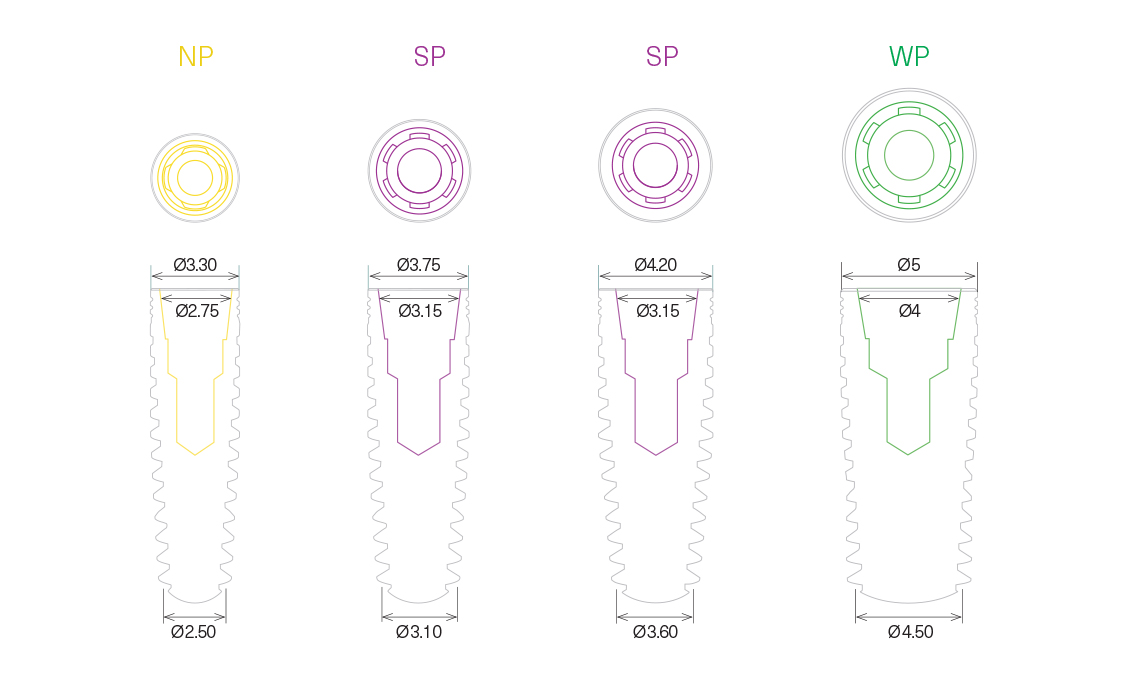C1 Conical Connection Implant
The C1 implant is a powerful player in the MIS conical connection implant fleet and offers a versatile solution for all clinical indications. This simple, accurate and proven implant system was designed with a conical connection and optimizes biological benefits and clinical and esthetic results.
The MIS comprehensive conical connection solution offers:
- One consistent prosthetic solution.
- One surgical kit.
- One drilling protocol.
- Two unique geometries of the C1 and V3 implant systems provide optimum implant integration and bone growth.
Read the specialist tips for working with conical connection implants >
Benefits
- Bone Preservation The C1 implant incorporates the platform-switching design concept. The 12-degree friction fit conical connection which ensures a secure seal and minimal micro-movements, micro-rings on the implant neck and a platform switched design, were engineered to provide a tight interface, improved BIC, and soft tissue preservation and growth. Crestal bone loss may be minimized by reducing mechanical trauma and stress in the cortical bone, and gaining soft tissue volume.
- Maximum Accuracy Each C1 package comes with its own sterile, single-use final drill, which is suitable for all bone types increasing the potential for a more precise-fit.
- High Initial Stability The C1 dual thread design increases the BIC (Bone to Implant Contact) over the entire body of the implant and ensures a safe and controlled insertion rate. With its conical, root-shaped geometry, the C1 is engineered for high primary stability and offers the ultimate choice for a wide range of clinical cases and loading protocols.
- Esthetics A broad range of MIS conical connection prosthetic components presents uncompromising accuracy; a consistent concave emergence profile for excellent soft tissue results; golden shade to support high esthetic results.
- Clinical Success The surface roughness and micro-morphology of all MIS implants, is a result of sand-blasting and acid-etching. This MIS established surface technology has provided millions of patients with excellent osseointegration results and long-lasting clinical success, and is backed by years of research and supporting data.
C1 with B+ Surface
B+ is a mono molecular layer of multi-phosphonates. It is permanently bound to the surface of the implant and is perceived as bone-like by the body.
Technical Information



